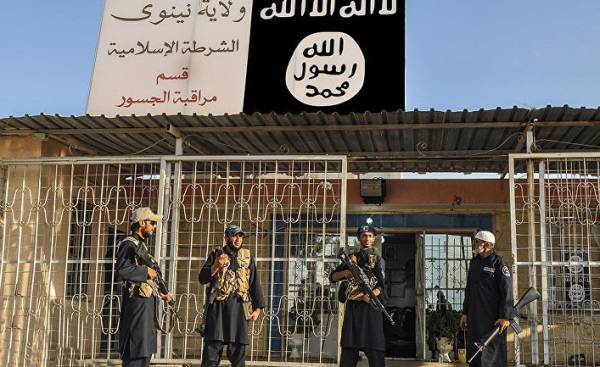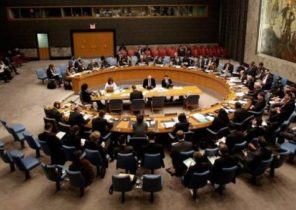
Istanbul, again in Istanbul, St. Petersburg, Stockholm. Evidence for four, and together they represent more than just proof. Recent attacks of ISIS (declared a terrorist organization and banned in Russia — approx. ed.) unites the Uzbek origin of their performers. All attacks were committed by Uzbeks or born in Kyrgyzstan, ethnic Uzbeks, with the support of Central Asian and Caucasian network. This is the same pattern as in the work of the worst combat units in the entire Caliphate Uzbek battalion.
These two phenomena are related to each other. Jihadists, drilled and fierce on the Syrian and Iraqi fronts, form a ridge of cells that carry out attacks on Europe. They become weaker and trust in the execution of the crimes at least “qualified” staff lose close relations with the “center” in raqqa and Iraq, but they still exist. Uzbeks are mostly in the Eastern part of the continent, closer to Russia. In the Western part working immigrants from North Africa. The prototype of the “Uzbek” attack is the attack in Istanbul’s Ataturk airport on 28 June 2016. Three suicide bombers were Uzbek citizen of Kyrgyzstan, ethnic Uzbeks (both with Russian passports) and Dagestan.
The organizer of the attacks was the Chechen Ahmed Charaev, known by the nickname “one-Armed” because he had lost one arm during the Second Chechen war against Russia. 37-year-old terrorist, the former Deputy Emir of the “Caucasus Emirate” (declared a terrorist organization and banned in Russia — approx. ed.), which was led by Doku Umarov, a huge “European” experience. After escaping from the war in Chechnya, in 2003, he is a refugee in Austria. But here faced with the problem of arms supplies to Chechnya. In 2008, he appears in Sweden, and here, too, comes in illegal weapons. After serving a year in prison, he moved to Georgia, where together with a group of Chechens involved in the murder of three police officers.
He manages, however, to get away and avoid extradition to Russia. He settles in Duisi, the hometown of Tarkhan batirashvili, or Omar al-Shishani, the most cruel and skillful commander of ISIS. He joins him in Syria in 2015 and proceed to organize the “external operations”. In raqqa he organizes the “Central Asian” cell, which should strike at Europe, while Abdelhamid Aboud takes the “severoamerikanskih”.
Turkey becomes a target of their attacks only at the end of 2015. Uzbek cell deals a blow to Ankara at the demonstrations of the Kurds, the attack killed more than 100 people. Further, in January and June 2016 in Istanbul (there were about 50 victims). The New year is an attack on a night club Reina. It is by Abdulkadir Masharipov, who was born in Uzbekistan during the Soviet Union.
He also traveled to Afghanistan, trained in al-Qaida (declared a terrorist organization and banned in Russia — approx. ed.), and then in Syria. He is a native of the Ferghana valley, the poorest part of Uzbekistan. The Ferghana valley is a depression crossing also Kyrgyzstan and Tajikistan.
In Osh, in the Ferghana valley, was born as a young terrorist, Akbarian Jalilov, carried out the attack last Monday, April 3, in the subway of St. Petersburg. According to Russian investigators, he was in contact with “Syrian rebels” and returned from a trip to Turkey and possibly into Syria.
In the Ferghana valley during the Soviet Union took root, the modern variant of Islamic Sufism, associated with the historical conservative over Jalal ad-DIN Rumi. Konya is located in the heart of Anatolia, became a center for the dissemination of this variety of Islam to Central Asia itself. It is in Konya found its refuge the murderer from the club Reina, Masharipov, before you move to Istanbul and to carry out his attack.
If “Uzbek” line connects the latest attacks in Eastern Europe, “American” directs the use of bloodshed for propaganda purposes. This is Ahmad Abousamra born in France in 1981 with American citizenship and a degree from the University of Massachusetts.
Abusamra reorganized the propaganda in social networks, giving preference to Telegram messenger, which is also used to give instructions to the “soldiers of the Caliphate”. It received in the West, higher education has allowed jihadist media to achieve a qualitative leap, in particular, it concerns a former monthly publication “Dabiq”, which received the new name “Rumiyah” and distributed in ten languages of the world. The last number of the edition is devoted to attacks in Europe and the use of vehicles for the organization of terrorist attacks.






